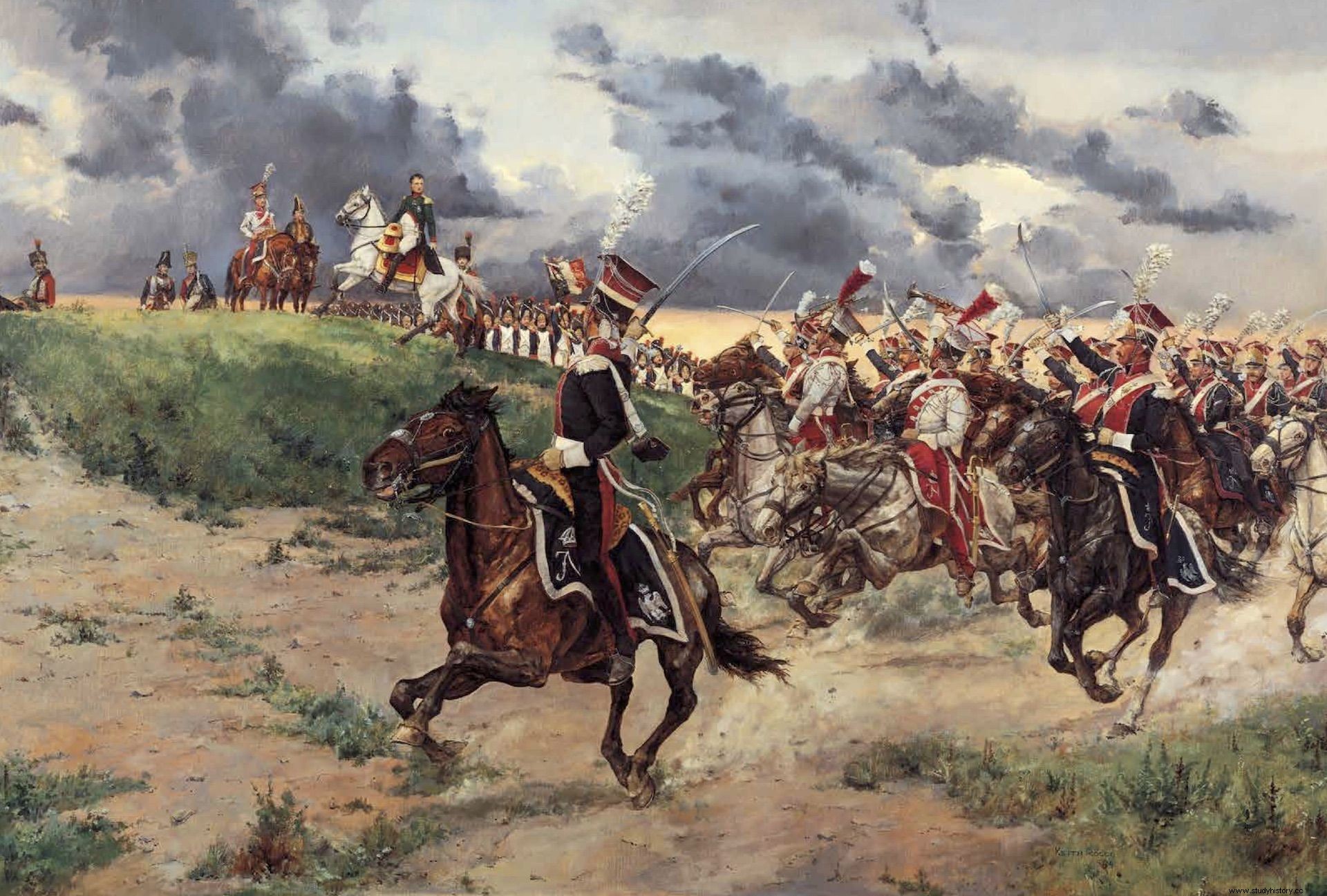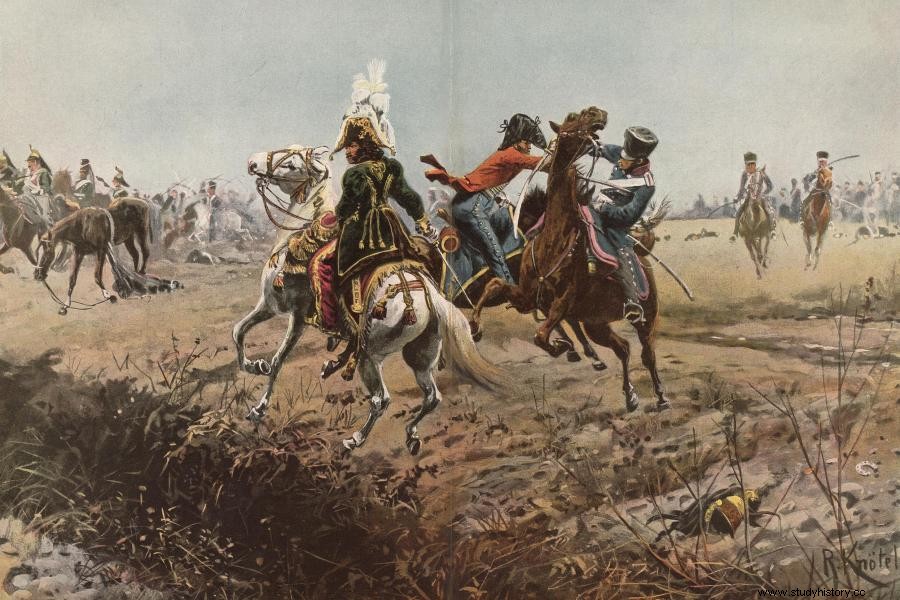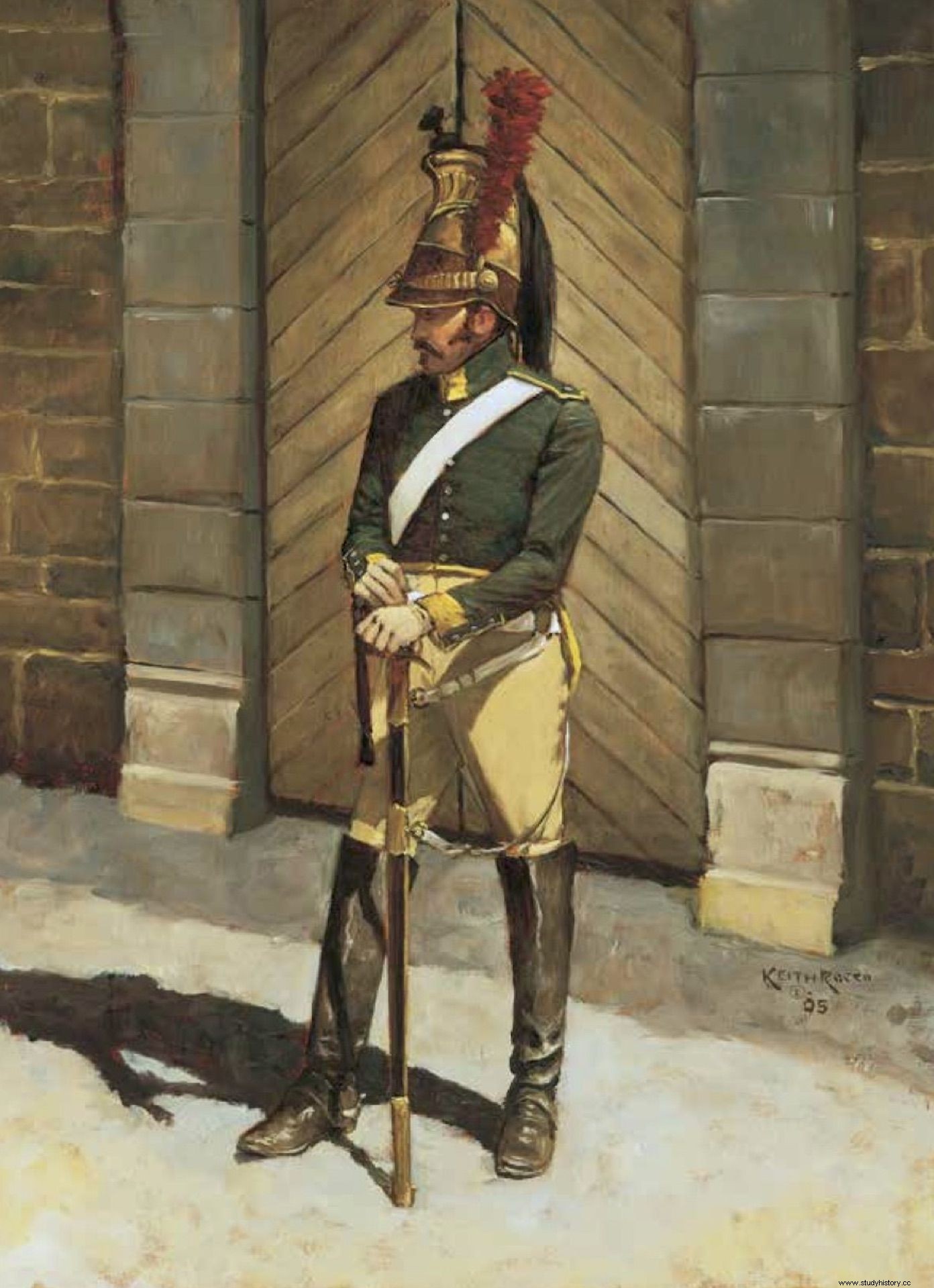
Murat , King of Naples, had orders from Napoleon to hold off the Army of Bohemia , for which he fell back to a favorable position, a smooth plateau that stretched between the towns of Liebertwolkwitz, Gueldengossa and Wachau, crowned by a hill (Galgenberg) from which the French artillery dominated the battlefield, and which hid the enemy the bulk of the imperial troops.
This and the muddy ground from recent rains should have been enough to slow the advance of the cautious Allied commander, the Austrian Prince Schwarzemberg , but the general Wittgenstein , commanding the vanguard of the Bohemian Army, which had orders to attack but without committing itself to any significant action, he interpreted Murat's withdrawal as a retreat and rushed in pursuit, hoping to meet a mere rearguard force. /p>
As the dense fog lifted on that damp, cold autumn morning, the Cossacks sent to reconnoiter the position began to send back reports of a strong enemy cavalry force that they were already encountering. engaged in various skirmishes. Murat numbered nearly 10,000 cavalry in 79 squadrons, compared with just 6,000 Allied horsemen. It was already too late to turn back.
What followed was a typical cavalry battle, a confused succession of charges and counter-charges, pursuits that were aborted by the presence of fresh troops, reorganizations in the rear and back to a combat in which the initiative changed hands as quickly as the fate of victory. Polish cuirassiers and lancers, dragoons, and French light horsemen charged into battle in successive waves, only to be countered again and again by the allied cavalry, which, despite their numerical inferiority, showed greater skill and tactical flexibility, responding to dense columns of French heavy cavalry deployed in squads that allowed them to threaten their flanks. And it is that the French cavalry still suffered the consequences of the disaster in Russia.
The Battle of Liebertwolkwitz it was gaining in intensity, fed by more and more regiments of Allied cavalry. Charges and counter-charges alternated with continuous skirmishes and reckless assaults on enemy artillery batteries, such as the one carried out by the Silesian Cuirassiers Prussians, who in their attempt to drag the captured guns to their positions suffered severe punishment (he would count 32% casualties at the end of the battle). In the confusion of the fighting, Murat himself He was about to be captured on two occasions, saved in extremis by the courageous intervention of his hostess.

However, like every battle of cavalry , the action was inconclusive, so Wittgenstein sent orders to General Klenau's IV Army Corps to attack and take the town of Liebertwolkwitz. He immediately joined the fray, protecting the flanks of his infantry columns from possible enemy charges with skirmishing light cavalry and making clever use of the terrain to conceal troops from him as they advanced. His appearance in front of Liebertwolkwitz was a complete surprise for the French, who were forced to withdraw the artillery batteries deployed next to the population, which had punished the allied cavalry so much. In contrast to the relatively bloodless cavalry fighting, the assault on the town was fierce, street by street, house by house, with positions successively changing hands. At 2:00 p.m., Liebertwolkwitz was in Austrian hands.
At this point, any French commander would have ordered a withdrawal, but Murat He wasn't just any commander. As he redoubled the pressure on Liebertwolkwitz's defenders, he arrayed his brave horsemen for one last charge.
At 1430 the French guns silenced their fire and from the smoke of the shots emerged a terrifying mass of dragoons (Divs. de Milhaud and L’Héritier ) in dense squadron columns, led by the Polish cuirassiers, with the light cavalry forming up in the rear.

Allied batteries opened fire on the tide of men and horses that were thrown at them, but without being able to stop them. Far from being intimidated by such a shocking spectacle, the Brandenburg Cuirassiers charged forward, supported by the Silesian Uhlans, the Russian hussars from the Sumy and Lubny regiments and various Austrian squadrons from the Erzherzog Ferdinand Hussar Regiment, from the Chevauxlegers of Hohenzollern, O'Reilly's Chevauxlegers and Kaiser's Cuirassiers.
The first wave of Allied cavalry managed to stop the French advance in its tracks, and the second sent them into retreat, once again proving the superiority of the Allied cavalry in 1813.
Murat's defeat at the Battle of Liebertwolkwitz could have precipitated the events of the Battle of Leipzig, but Wittgenstein once again showed little initiative and, following at the foot of Verbatim his orders not to engage in significant combat, he decided not to keep up the pressure, not even to reinforce Klenau's precarious position in Liebertwolkwitz itself, which was under constant French attack. After hours of fierce fighting, around 6:00 p.m. the French managed to take the church, the last stronghold of Austrian resistance.
The Battle of Liebertwolkwitz was over. Lepizig, the Battle of the Nations that would change the fate of the Napoleonic Wars, was about to begin.
